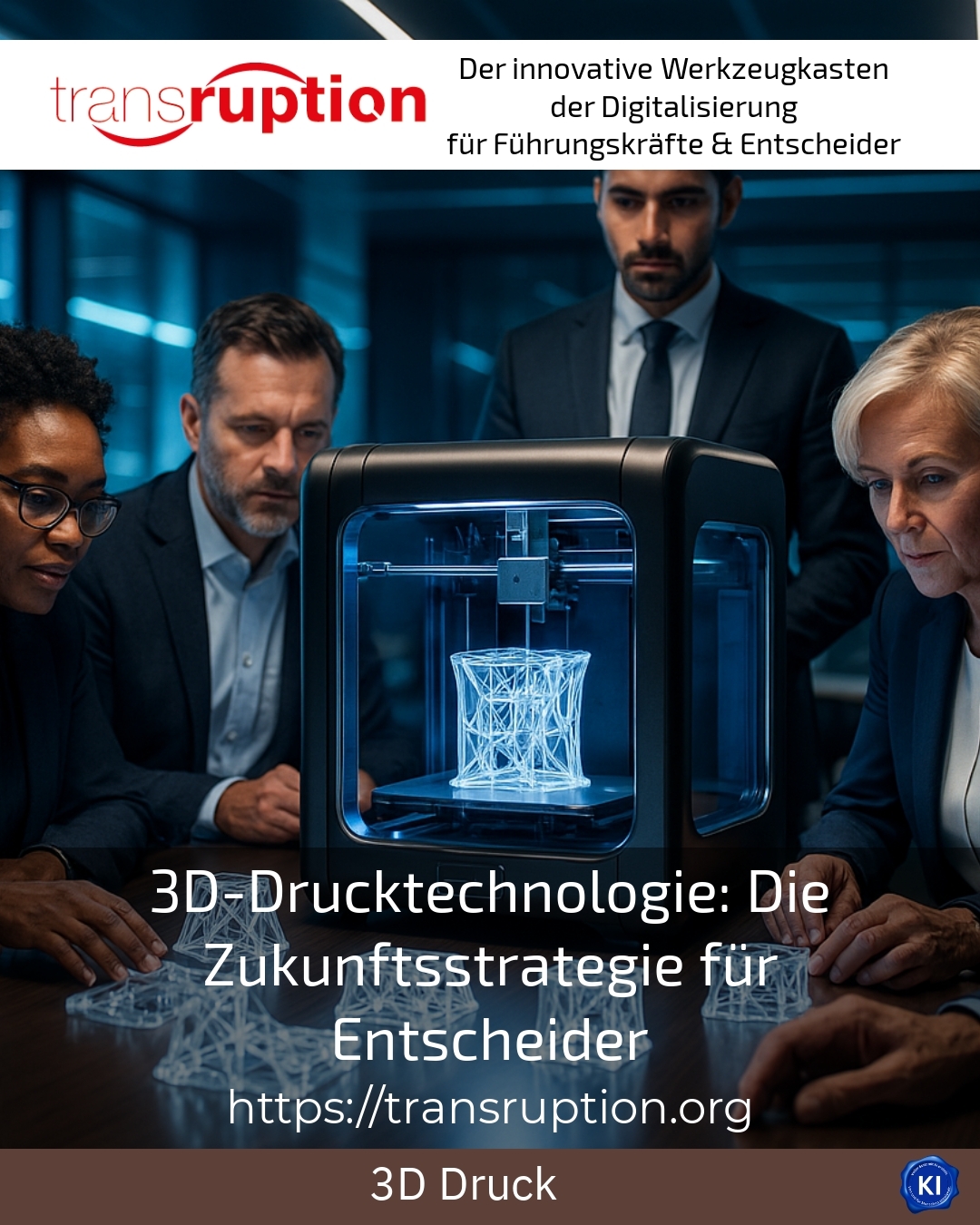Introduction to 3D printing technology: A strategic advantage for decision-makers
3D printing technology is becoming increasingly important as a modern manufacturing method. Decision-makers from various industries are faced with the challenge of understanding and utilising innovative technologies. At the same time, they want to increase efficiency, reduce costs and establish sustainable processes. In this context, 3D printing technology offers a wide range of opportunities to fundamentally change product development and manufacturing and secure competitive advantages.
This article shows practical examples and provides inspiration on how companies can use 3D printing technology to shape their future strategy.
Diverse applications of 3D printing technology in industry and trade
3D printing technology is used in numerous fields of application. The following sectors are particularly noteworthy:
- Aerospace: 3D printing processes enable the cost-efficient production of complex parts such as engine components or fuel tanks. Such parts are characterised by lightweight construction and high resilience, which is essential for the industry.
- Automotive industry: Additive manufacturing supports rapid prototyping, the production of customised tools or small batches, as well as the production of spare parts on demand. This significantly shortens development cycles.
- Medical technology: Customised implants, prostheses and surgical instruments can be manufactured quickly and precisely using 3D printing and thus optimally adapted to patients.
These examples illustrate the practical benefits of 3D printing technology for a wide range of manufacturing processes.
BEST PRACTICE at the customer (name hidden due to NDA contract) A medium-sized automotive supplier in southern Germany implemented 3D printing technology to produce prototypes of its new component series in the shortest possible time. This enabled development times to be reduced from several weeks to just a few days, which significantly accelerated the market launch.
Optimisation of product development and production with modern 3D printing technology
Decision-makers benefit from the many advantages of additive manufacturing:
- Reduced development times thanks to rapid prototyping and iterative design adjustments.
- Greater design freedom, allowing the production of complex geometries that are difficult to realise with conventional processes.
- Cost savings through lower material consumption and minimisation of tool costs.
- Improved sustainability thanks to the possibility of using recycled or bio-based materials and reducing waste.
The combination of advanced materials and AI-supported production in particular simplifies processes and increases product quality.
BEST PRACTICE at the customer (name hidden due to NDA contract) A manufacturer of special tools uses AI-supported slicing in its 3D printing process. This makes it possible to minimise material consumption and precisely control the mechanical strength of the parts at the same time.
Practical benefits: From tool production to individualised small series
In the workshop and production, it is particularly evident how 3D printing technology is strengthening areas such as toolmaking and small series production:
- Production of tools, devices and assembly aids directly on site, which reduces logistics costs.
- Production of customised parts according to customer requirements, for example for mechanical engineering or medical technology.
- Flexible response to market changes thanks to rapid customisation and replication.
BEST PRACTICE at the customer (name hidden due to NDA contract) A company in the electronics industry uses industrial 3D printing processes to manufacture specific components. This allows it to produce smaller series flexibly while significantly reducing time-to-market.
Looking to the future: 3D printing technology as an integral part of the innovation strategy
Decision-makers should see 3D printing technology not just as a technical option, but as a strategic tool for innovation. In this way, competitiveness and adaptability can be strengthened. In addition, digitalisation and automation support the integration of this technology into existing production systems.
Many teams report that clear support and targeted coaching during the implementation of their 3D printing projects are important success factors - for example through expertise in materials science, process design and quality control.
BEST PRACTICE at the customer (name hidden due to NDA contract) A medium-sized mechanical engineering company relied on external consulting for the implementation of 3D printing technologies. This enabled the team to build up internal expertise and gradually optimise production processes, resulting in improved products and greater customer satisfaction.
My analysis
3D printing technology offers decision-makers in particular an outstanding opportunity to increase their competitiveness across a wide range of industries. Its diverse applications - from rapid prototype development to efficient small series and sustainable material solutions - open up new potential. It is crucial to recognise the technology as a strategic building block and to anchor it in the company through targeted support and coaching.
Continuous innovations, particularly in materials and automated processes, will also strengthen this trend in the coming years. As a result, 3D printing remains a pioneering future strategy for modern production and development decisions.
Further links from the text above:
Top trends in 3D printing in 2025: materials, machines and AI
3D printing applications - overview & examples
Five industries that benefit most from 3D printing
How to choose the right industrial 3D printer
Industrial applications of plastic 3D printing
3D printing in industrial applications
25 (unexpected) applications for 3D printing
Areas of application: What the industry often uses 3D printing for
3D printing trends 2025 - Fabrica GmbH
Industrial applications for 3D printing: best practices
For more information and if you have any questions, please contact Contact us or read more blog posts on the topic TRANSRUPTION here.
















